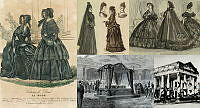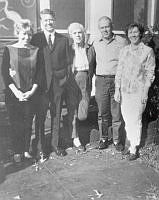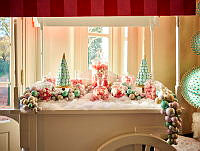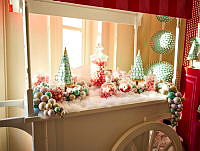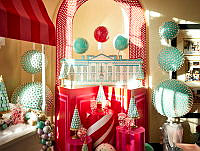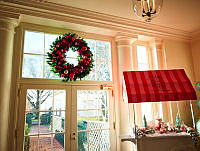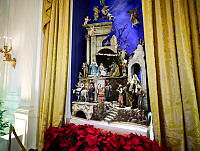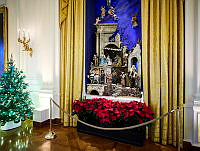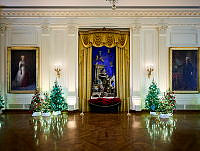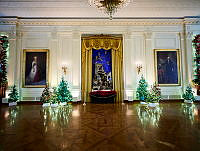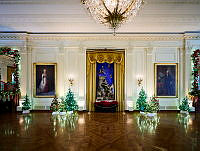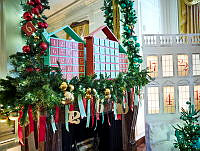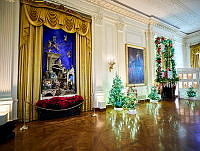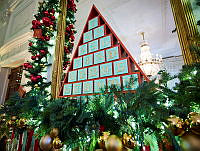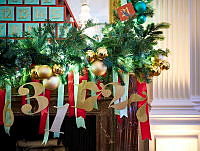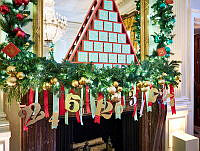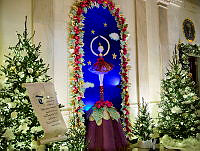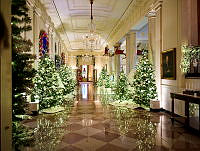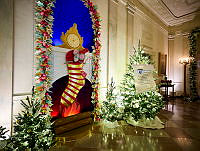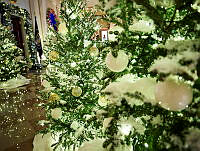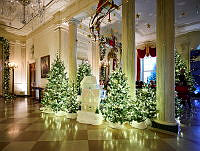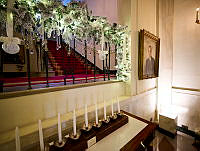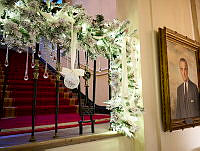An Essay on "The Secret Garden" by Peter Waddell
Last Days of an Exotic World, 1902
Copyright © White House Historical Association. All rights reserved under international copyright conventions. No part of this article may be reproduced or utilized in any form or by any means, electronic or mechanical, including photocopying, recording, or by any information storage and retrieval system, without permission in writing from the publisher. Requests for reprint permissions should be addressed to books@whha.org

Peter Waddell, The Secret Garden, oil on canvas, 40 x 30.
Peter Waddell for the White House Historical AssociationThe artist's imagination here has been sparked by both the photographs and extensive invoices listing hundreds of types of plants purchased for the White House greenhouse and conservatory. In 1833, President Andrew Jackson built the first greenhouse, an orangery, which was moved to adjoin the house in 1856 located off the west end of the main hall. After the conservatory burned in 1867, a more ambitious structure was built, and over the years expanded into a major greenhouse with orchid rooms, cactus rooms, a rose garden, camellias in great number, seasonal flowers and the usual citrus trees. Closest to the house was the tropical room, seen here, filled with plants. Here Kermit Roosevelt, President Theodore Roosevelt and First Lady Edith Roosevelt's son, plays with his macaw Eli Yale and his cat Tom Quartz, as his mother looks on from the door into the White House.
No feature of the nineteenth-century White House was more popular with first families than this world under glass. Here the first family had privacy, sunshine, and the delight of plants and flowers. Paths, seemingly endless, led between avenues of low tables with terra cotta pots lined up on them, filled with plants. Flowers were cut to use in the house and send as bouquets to visitors in town. At the time of this scene, about 1902, four bouquet makers were on the White House staff and in their conservatory work room produced centerpieces, flower arrangements, corsages and floral offerings to be sent out with specially printed cards acknowledging the gift from the president and first lady.
The conservatory stood in various forms for about fifty years atop the West Wing or Terrace of the house. When in 1902 it was decided to remodel the White House, the architect Charles McKim with great difficulty convinced the Roosevelts that the glass houses should go, for they were an impediment to the historical authenticity of the original White House. At first the Roosevelts absolutely refused, cherishing the pleasures of the glass houses. But the symbolic importance of the White House to the nation, which only recently had been recognized a world power, won out. The conservatory, which was of metal, was disassembled and for a time reassembled in part on the National Mall. Today parts of it are incorporated into greenhouses maintained by the National Park Service in Maryland.











